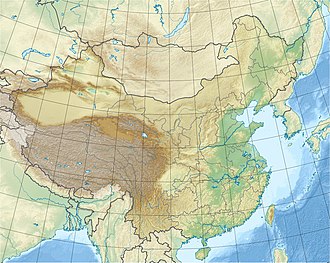| UTC time | 2003-07-21 15:16:33 |
|---|---|
| ISC event | 7003234 |
| USGS-ANSS | ComCat |
| Local date | July 21, 2003 |
| Local time | 23:16:33 CST (UTC+8) |
| Magnitude | 5.9 Mw 6.1 Ms |
| Depth | 9.2 km (5.7 mi) |
| Epicenter | 25°58′N101°15′E / 25.96°N 101.25°E |
| Type | Strike-slip |
| Areas affected | China |
| Max. intensity | MMI VII (Very strong) |
| Casualties | 19 dead, 644 injured |
The 2003 Dayao earthquake occurred on July 21, at 23:16:33 CST. The epicenter of the moment magnitude 5.9 earthquake was in Dayao County in the mountainous area of central Yunnan, China. [1] At least 19 people were killed, 644 were injured, [2] and 8,406 families became homeless. The quake also caused $75 million USD in damage. [3] [4]


